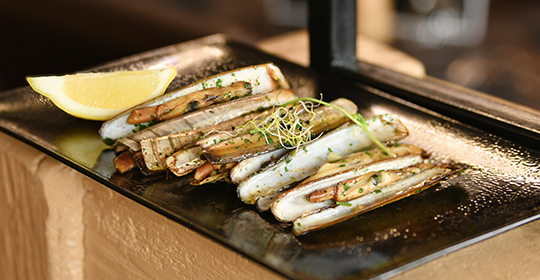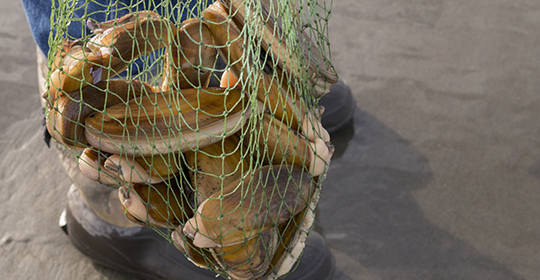How to Dig for Razor Clams: 5 Key Tips for Beginners
By Debbie Hanson
Feb 12, 2024
List of tips on how to dig for razor clams in the Pacific Northwest, important info for beginners who are planning a clamming trip in Washington, Oregon.
When learning how to dig for razor clams, there are some key tips for beginners that are very important to know. To start, Pacific razor clams are wider and meatier, which makes for a more productive harvest as well as a better meal. When you hear people talking about razor clam digging, they are usually referring to Pacific razor clams that are found in Washington and Oregon.
Check Razor Clam Regulations
You will need to purchase a recreational permit or razor clam license before you dig for razor clams. The permit or licensing process ensures that the clams aren’t overharvested. Razor clam season information and the issuing of permits also indicate that the clams are safe to eat and don’t contain high toxin levels. Each person must have a permit when razor clam digging and can only harvest a certain number of clams per day. In Oregon, for example, you must obtain an Oregon Department of Fish and Wildlife (ODFW) recreational shellfish license to recreationally harvest molluscan shellfish if you are 12 years of age or older.
Learn Where to Go for Razor Clams
Research information about the best Pacific Northwest razor clam beaches. In Washington, Long Beach, Twin Harbors, Copalis Beach, Mocrocks Beach, and Kalaloch allow razor clam digging. In Oregon, the 18-mile stretch of Clatsop beaches (from Tillamook Head near Seaside to the Columbia River bar) accounts for 90 percent of Oregon’s razor clam harvest. Talking with local clammers can be particularly helpful since they can provide insight into the best spots.

Learn When to Harvest Razor Clams
Build your razor clam hunting skills by timing your trip according to the tides. Plan on heading out to the beaches about an hour or two before low tide for your best chances of finding and harvesting these tasty bivalves. When the tide falls, you can see small dimples, keyholes, or doughnut shapes in the soft sand where the clams have been digging downward. In terms of knowing what time of year to go digging for razor clams, check the current razor clam season information provided by the Washington Department of Fish & Wildlife and/or the Oregon Department of Fish & Wildlife.
Get the Right Gear
To stay warm and dry, it’s a good idea to wear chest or hip waders and dress in layers. On the beach you’ll see two main types of tools used to pull up the clams. Most people use a special clam gun made of metal or PVC (a hollow cylinder with handles that pulls up a column of sand along with the razor clams), but sometimes more experienced clammers will use a clam shovel. You will also need to bring along a mesh bag or basket to collect the clams once you harvest them.

Dig for Razor Clams Using a Clam Gun
Once you’ve found the subtle signs in the sand, such as dimples or keyholes (referred to as clam shows), it’s time to dig. If you’re using a clam gun, place it off-center of the show with some extra room on the ocean side. Razor clam shows are usually not directly above where the clam is and are at a slight angle towards the ocean. Then, with the air hole on the clam gun uncovered, drive the gun straight down. From there, place your thumb or finger over the air hole of the clam gun and lift the column of sand up slowly, using your legs. Finally, remove your thumb from the air hole, shake the sand out of the clam gun, and collect the clam.
Once you’ve learned how to dig for razor clams, the best way to bring them home is by keeping them cool and simply covering them with cloth soaked in seawater (not sitting in seawater). Clean the razor clams as soon as you get home and store the meat in the refrigerator (no longer than three days) until you are ready to cook them.









